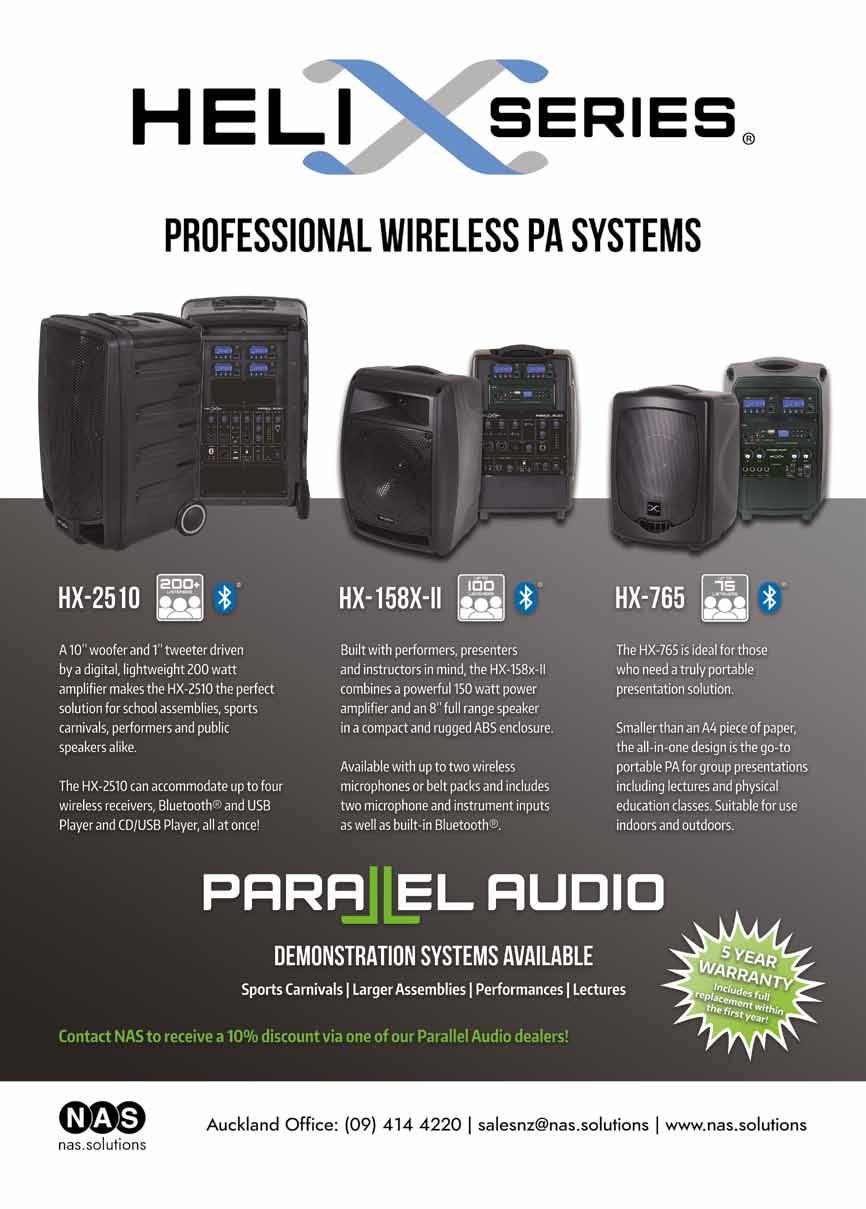Whitiora School
Where Wellbeing Comes First


Whitiora School
Where Wellbeing Comes First

Your school’s playground is more than just a place to play, it’s also an extension of your school’s values.
At Creo, we understand the importance of creating a playground that not only provides fun and entertainment, but also promotes learning, physical development, and interaction.
That’s why we work closely with schools to design and build playgrounds that align with their values and culture.
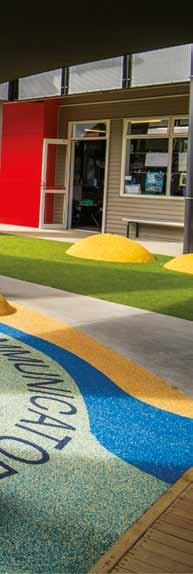


At Silverdale School, that meant introducing the school’s learner profile through the design of the play surface and creating a waterplay environment to encourage exploration, curiosity, and creativity. When you work with Creo, you can expect a playground that not only brings joy to students but also supports their growth and development in a meaningful way.




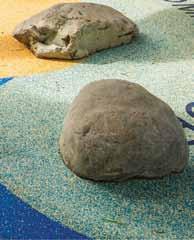

EdiTOr
Liz hawes Executive Officer
PO box 25380
Wellington 6146
Ph: 04 471 2338
Email: Liz.hawes@nzpf.ac.nz

MagaziNE PrOOf-rEadEr helen kinsey-Wightman
EdiTOrial BOard
Leanne Otene, NZPF President geoff Lovegrove, retired Principal, Feilding
Liz hawes, Editor
advErTiSiNg
For all advertising enquiries contact: Cervin Media Ltd
PO box 68450, victoria St West, auckland 1142 Ph: 09 360 8700 or Fax: 09 360 8701
NOTE
The articles in New Zealand Principal do not necessarily reflect the policy of the New Zealand Principals’ Federation. readers are welcome to use or reprint material if proper acknowledgement is made.


SuBSCriPTiON
Distributed free to all schools in New Zealand. For individual subscribers, send $40 per year to:
New Zealand Principals’ Federation National Office, PO box 25380, Wellington 6146

New Zealand Principal is published by cervin Media Ltd on behalf of the New Zealand Principals’ Federation and is issued four times annually. For all enquiries regarding editorial contributions, please contact the editor.
ISSN 0112-403X (Print)
ISSN 1179-4372 (Online)
PHOTOS FOR THE MAGAZINE:
If you have any photos showing ‘New Zealand Schools at Work’, particularly any good shots of pupils, teachers or leadership staff, they would be welcome.
The appropriate permission is required before we can print any photos.
TECHNICAL dETAILS:
good-quality original photos can be scanned, and digital photos must be of sufficient resolution for high-quality publishing. (Images should be at least 120 mm (wide) at 300 dpi). Please contact cervin Media Ltd for further details. Phone: 09 360 8700 or email: education@cervinmedia.co.nz
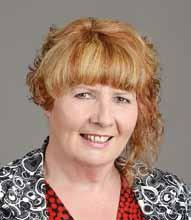
IF WE haD to pick just one thing that would symbolise a healthy society, I would pick connections. If we are connected, we belong. We can build relationships, communicate, share, be supported, care and be cared for. Connected people listen to each other, learn from each other, teach each other, are informed and have fun together. They understand each other, accept each other’s differences, form coherent groups, and respect each other. They do not feel isolated, excluded, uninformed or worthless.
The four-week long parliamentary protests of 2022, held when our Covid19 infection rates were at their peak, is a good example of what happens when people are disconnected. A disparate throng, peaking at around 3,000 people, gathered at parliament in desperate need of connection to a group, a cause, to feel a sense of belonging. These people represented the disenfranchised, the fringe, the angry, the oppressed and powerless. They were a diverse group of young, middle-aged and old; Māori, Pākehā, Asian; hippies, gang members, church groups, stoners; Donald Trump supporters, conspiracy theorists, and the politically far-right. Most of them were anti-vaccination and anti the vaccination mandates – which were imposed on people employed in certain occupations (Police, educators, health care workers). But in the absence of any cohesion or leadership, the protesters were quickly hijacked by the far-right fringe who advocated violence and threats.
If we imagine the parliamentary protest as a microcosm of ‘society’ then it is an example of a very dysfunctional one. Inevitably this ‘society’ lost any focus or coherence it might have had and disintegrated, ending in violent riots, with police called in to clear the occupiers from parliament’s grounds. It was a society devoid of connections.
In her first ‘President’s Pen’ column in this issue (p.3), President, Leanne Otene, also emphasises the importance of connections. She explains that connections between schools were a casualty of the Tomorrow’s Schools’ policy, as under the new self-management system, schools were set to compete with each other. This is contrary to the way in which schools operate best, which is to collaborate and share good practice for the benefit of all tamariki. Whilst Principals’ Associations play a role in connecting principals in their regions, and providing a certain level of professional development and social activities, largely, principals work in isolation from each other. Even when principals seek out connections through Ministry funded ‘Communities of Learning’ or Kahui Ako, there are only so
many who can benefit. Those in small, rural, or isolated areas are generally excluded because of the travel demands and rarely have the spare cash to fund travel, or the release time to enable it. These are some of the inequities which vex the system.
None of this diminishes the need for schools to be better connected, however. Without connections, schools will not achieve the high standards of learning and teaching that all principals aspire to for the nation’s tamariki. This year the new and exciting Aotearoa New Zealand histories curriculum will be embedded. The histories curriculum holds huge promise and invites schools to connect with their local marae, hapū and iwi in learning the local stories of their place. It is a perfect opportunity for schools to work together regionally with mana whenua to give all tamariki the broadest experiences and knowledge of local Māori and their practices, the lands around them and the relationships between land and people. As has been said many times, when all tamariki understand Te Tiriti o Waitangi as a document of equal partnership and know the true stories and tikanga of their local whenua, the nation will be greatly advantaged and racism and discrimination will take a heavy knock.
Hard on the heels of the Aotearoa New Zealand Histories curriculum is the ‘Curriculum Refresh’. That too is expected to be implemented this year. The Ministry started preparations last year beginning with nationwide roadshows on the mathematics curriculum. Sessions were not held in every region and so again, there are those who could easily attend and benefit from the sessions and those who could not. Inevitably the roll out of the curriculum refresh will again be uneven with some schools competently well prepared and others not.
Is there an answer to the disconnects within our education system? Cathy Wylie, a former researcher for the New Zealand Council of Educational Research (NZCER) proposed a solution. She suggested, after reviewing the Tomorrow’s Schools policy, that regional hubs should be established which would not only provide the vital connections principals needed but would also provide a range of support and leadership services to schools, which they could choose to access or not. They would also employ principals. Principals roundly rejected the idea of hubs at the time, but maybe it is time to revisit this decision. Some would say it is vital that we do if we want education to be a healthy ‘society’.
this year the new and exciting AOTEAROA N E w
Z EALAN d HISTORIES
C u RRIC u Lu M will be embedded.
Ko Orowhano tōku maunga
Ko Rangiheke tōku awa
Ko Mamare tōku waka
Ko Te Rarawa tōku iwi

Ko Ngati Kuri tōku hapu
Ko Manukau tōku marae
Ko Whakamaharatanga tōku whare tuupuna

Ko Hapakuku ruia te tangata tipuna
Te uri ō Hapakuku Ruia
Ko te tumuaki ahau o Manaia View School
Ko Leanne Otene ahau
Tena koutou katoa, Nga mihi ō te tau hau.
SINcE SEPTEMbEr 2022, when you elected me to be your national president, I have had time to think about my new responsibilities and to consider the purpose for which NZPF was formed 40 years ago. In the late 1980s, the Tomorrow’s Schools policy introduced self-managing schools, with each school governed by a Board of Trustees, who would employ the principal. This system replaced the former Education Board structure. It was a major system shift which would forever alter the role of the principal. No longer would they just be the leaders of learning in their schools, they would also be administrators of property, finances, health and safety, human relations, and would be accountable to and for their communities like never before.
Many welcomed the shift from the Education Boards model, which gave principals little decision-making powers to respond, in a timely way, to specific needs within their own schools. Now principals would have the freedom to make their own decisions as they saw fit and they welcomed that.
For all the advantages, there were many disadvantages. With independence the system lost curriculum advisors, leadership support, the school inspectorate and PLD. Schools now competed rather than collaborated and there was no specific training for principals to undertake their new administrative responsibilities. Breaking connections between schools was one of the worst outcomes and this isolated principals.
Principals needed their own organisation, to represent and speak out about these issues, to support them and to secure ongoing PLD so that they could continue to provide the best possible educational opportunities for our tamariki. That is the context within which NZPF emerged and quickly, NZPF became a respected and influential voice. I acknowledge all those presidents upon whose shoulders I now stand. They have
contributed to strengthening principal voice in so many ways. Today NZPF is an organisation of over 1,200 school principals. I believe, collectively, we can continue to effect changes to benefit tamariki in our schools if we pull together and work together. There is no shortage of issues to tackle. Our schools reflect what we see in society. We now face serious issues of inequity, an increase in tamariki mental health issues, in learning support needs and we have an unacceptable increase in children living in poverty. Our population has become far more diverse, culturally and individually. Tamariki Māori are still struggling to find their place at school, still experience racism and their educational success rates are still lower. At the same time, we have problems with training and retaining teachers; we have principals retiring early because they are exhausted; and the profession is not as respected and valued as it used to be. We face curriculum changes, attendance challenges and workforce concerns.
Despite this, principals, teachers, and support staff returned to school this term excited and motivated to get the year’s programme underway, because that’s what we entered the profession to do – to make a difference. We capture all this excitement because, with the support of our staff and communities, we want to provide excellent teaching and learning opportunities that encourage inclusiveness, whanaungatanga and manaakitanga. We want our teaching teams to build on their professional knowledge throughout the year and to develop culturally sustainable practices – to embed the culture and language of our Tangata Whenua so that a Māori world view is valued and normalised in our schools. We are excited to involve our local hapū and iwi to inform our local histories within the Aotearoa New Zealand curriculum. We want every child to have the best chance of educational success.
Principals can’t achieve all this alone, and that is where NZPF has its part to play. It is my job, as your elected president, with the support of the national executive, to work with Ministers and the Ministry to break down system barriers and achieve greater equity right across the system; to allow access to ongoing PLD for principals and teachers in all schools including small, rural and isolated kura; to support collaboration across all schools; to bring an end to streaming in schools which unfairly disadvantages Māori; to provide on-going support and professional development for principals so that the demands
of the job do not break them; to establish on-going curriculum advice and support for all schools so that the new ‘curriculum refresh’ can proceed successfully.


My mantra is to listen, to learn and to act. I have spent much of January and February meeting with heads of sector groups and senior staff of the Ministry, Teaching Council and ERO –listening and learning and building relationships. The national executive met in January and has formed a strategic plan for the year with principal hauora prominent. I have already shared the plan of work with you through the Principal Matters newsletter. Now it is time to act.
To ensure the morale and mana of principals is not just about having the personnel, resources and tools at hand but having networks to support each other in the mahi we do. That is a task we can do together by building on existing networks and creating new ones. This is about principals supporting principals. Working together we can create powerful connected groups which will sustain us through the tough times. That is why principal hauora is our priority.
My excitement at the possibilities ahead is evident, and I am optimistic that we can maintain the enthusiasm we felt at the beginning of the school year. I know we will if we do it together.
Ngā manaakitanga Leanne Otene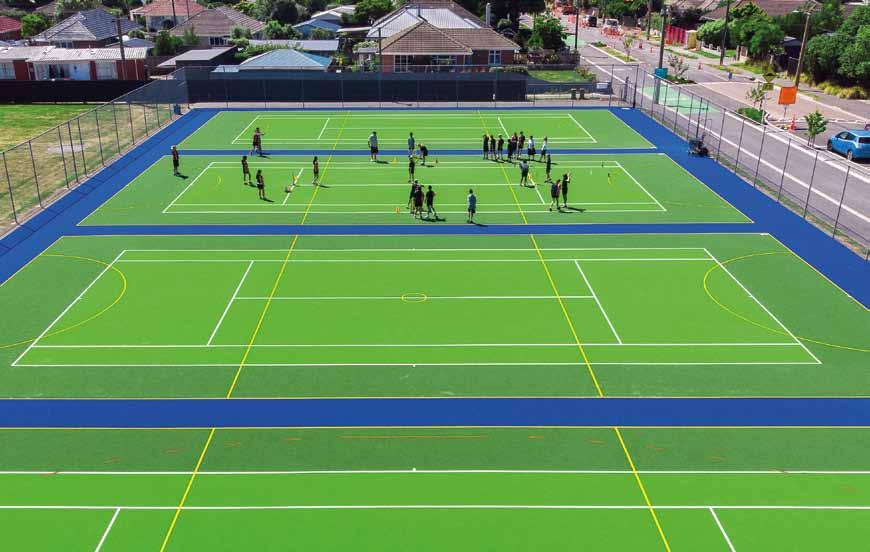



Let Brother optimise your school’s print solution, making sure you have everything you need and nothing you don’t, helping you to reduce costs and invest the savings to help more Kiwi students reach their potential. Get a quote today and make the change to Brother. brother.co.nz/education



It just works.
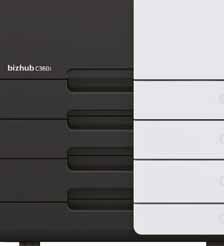
But with a right fit fleet it could save some.
The inauguration of newly elected NZPF President, Leanne Otene, took place on her ancestral whenua – Manukau Marae in herekino, 35km south of kaitaia. It was an auspicious occasion because Leanne Otene is NZPF’s first Wāhine Māori President.



LEaNNE IS huMbLED by the honour but is quick to point out that we should not be celebrating ‘firsts’ for Māori in 2023. ‘We still have mahi ahead of us to ensure that Māori are visible in all leadership roles,’ she said.
A principal of 26 years, Leanne is an accomplished leader and was recipient of the Outstanding Mentor Award and the NEiTA (National Excellence in Teaching Awards) Founders’ Principals Award for Leadership last year. The NEiTA judge’s convenor, Allen Blewitt, said at the time that Leanne had undertaken formal mentorship training and had been a first-time principal mentor for many years. He went on to say that it is the hallmark of a true professional who gives their knowledge and experience to enrich the next generation. Good mentoring, he said, is one of the key determinants for young principals staying in the profession.
Leanne’s leadership, knowledge and understanding of indigenous issues has also been recognized both locally and outside of Aotearoa New Zealand. She addressed the More Aboriginal and Torres Strait Islander Teachers Initiative (MATSITI) conference, as a keynote speaker, at Adelaide University and has twice addressed indigenous Trans-Tasman conferences.
Locally, her Manaia View School’s response to covid was described as exemplary and to support her colleagues, she regularly shared her communications and education plans with other
regional principals. As a result, she was selected to join a nationwide select group of principals to monitor the Government’s covid advice to principals.
The mana she holds within her own whānau, in her Manaia View School community in Whangārei, and more widely in the education sector, was clear on the day. Her commitment to the Māori Achievement Collaborations (MAC), principals’ professional learning kaupapa, was in evidence with a full contingent of the MAC leaders and facilitators travelling to honour her and participate in her inauguration. She was an early adopter of the MAC and has remained a steadfast supporter. There was no shortage of principals from the northern regions and beyond in attendance to congratulate her and wish her well, and Ministry officials past and present made the journey to awhi her. During the whaikōrero, speakers, including Minister Kelvin Davis who

Give your students the best advantage to excel at maths. They use our textbooks, while you have all our free online teacher support. YOUR STUDENTS DESERVE THIS!

mel@caxed.co.nz www.caxed.co.nz
had travelled from Wellington especially for the occasion, acknowledged Leanne’s achievements, talents and determined commitment to the education of tamariki in Aotearoa New Zealand. Both Leanne and the Minister had embarked on their principalship careers at the same time, in Te Tai Tokerau.

In addressing her people, she emphasized her own mantra. She would listen, learn and act. She acknowledged the honour of being elected to lead the principals of Aotearoa New Zealand and said, ‘I do not walk alone in this role. I walk with my tūpuna and on the shoulders of those who served before me. My achievements will not be mine alone. They will also be yours.’
Healthier food options for New Zealand’s hungry learners.


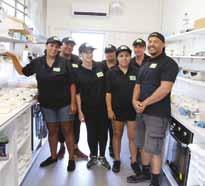




• Top quality, freshly made lunches for learners.



• On-site or delivery service, tailored to suit you.
• Professionally audited food control plan.

• Trained, qualified, local staff.


It’s simple: Let our professionals feed hungry students, while your professionals feed hungry minds.


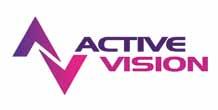





NOWhErE FEELS aS warm and welcoming as an Akatea conference. It begins with the pōwhiri and continues for the duration. This year, conference was held at the Vodafone Events Centre in Manukau City, South Auckland. You know this place is special when you are greeted by the 70 feet tall kauri Pou Kapūa Taonga, alongside which are two 3-metre high moai –Easter Island figures. The Pou Kapūa is described as ‘a gift from Māori and all New Zealanders to the world’ and incorporates not just Māori symbolism and stories, but also Polynesian creation beliefs and legends and stories of migration to Aotearoa New Zealand. Indigenous carvers from Alaska and Saskatchewan were also invited to contribute, carving their ancestors onto this brightly coloured pou. It is a superb piece of art and even more beautiful because of its inclusiveness. Organisers had staged the conference space in the style of a bygone Pā site, complete with fern fronds, flaxes and palisades to frame the exhibitors and sponsors, and to mark out the stage area, from where the energetic performances of Ākonga from Kia Aroha College rang out. But it’s not just the place that makes the conference so special, it’s the people. Māori have a whakatauki (proverb) to express this sentiment. He aha te mea nui o te ao? He tangata, he tangata, he tangata! ‘What is the most important thing in the world? It is people, it is people, it is people’. This proverb, linked to the concepts of whānaungatanga and manaakitanga, becomes real and natural when you gather with Akatea principals. Whether singing a waiata, learning an action song, listening to speakers, or in a break, randomly enjoying beautiful saxaphonic tunes played by Damon Ritai, you are included, and connected. You are part of the whole. This feeling is even more poignant when the theme of almost every presenter involves the notion of ‘collectivism’. The whole is so much greater

than the individual parts.
The theme of collective power was made clear in President, Bruce Jepsen’s, opening speech.
‘Te Akatea emerged in the 1990s from collective dreams,’ he said, before quoting Princess Te Puea Hērangi –



‘Mehemea ka moemoeā ahau, ko ahau anake. Mehemea ka moemoeā tātou, ka taea e tātou.’
‘If I dream, I dream alone. If we dream as a collective, we can achieve our dream.’
He talked about the evolution of Te Akatea over the years, how it has strengthened its voice and developed more ambitious dreams, like shifting inequities. ‘Our perspective is valued by the Ministry of Education now,’ he said, ‘and that creates more opportunities for us.’ He used the Aotearoa New Zealand Histories curriculum as an example of how the Māori voice has had influence and the contracts that Te Akatea has won as a PLD provider for Māori leadership, including the new ‘Emerging Māori Leaders Programme’, the ‘Māori First Time
Principals’ Programme’ and the well-known and respected Māori Achievement Collaborations (MACs).

His pledge was to, ‘ . . . work with mana whenua, hāpu and iwi to bring their collective dreams to reality.’ This, he said, will require a transformational review of the Akatea constitution so that it reflects our intentions in 2023. That includes taking account of the United Nations Declaration on the Rights of Indigenous Peoples to control their educational systems and institutions, and assertion of tangata whenua rights. ‘It is all about increasing the power of the Māori collective,’ he said.
He concluded by acknowledging all the former presidents of Te Akatea since 1990 and the contributions each has made. ‘We have all been fighting the same struggle,’ he said.
Kiritina Johnstone, the Te Reo Māori Group Manager for the Ministry, updated Tumuaki on the redesign of Te Marautanga O Aotearoa – the New Zealand Curriculum that stems from a Māori world view and has an unconditional commitment to ākonga and whānau. Ākonga, she said, carry ancestral legacies through their whakapapa and it’s our job to support them to know their whakapapa, so they can contribute to their whānau, hapū and iwi and be the link between past, present and future. There are things to be fixed, she said, including inequities, bias and racism.
She outlined the four pou supporting the Te Marautanga Curriculum that must come to life, including equity, trust and cohesion. ‘We must build this into our system, she said. The Ministry can do so much then we need you to help us,’ she said. ‘It’s easy to change the policy, but the challenge is getting the backing for that policy.’ She encouraged
Te Akatea representatives to speak out in Ministry meetings and remind those present that equity, trust and cohesion are not yet a reality. She also encouraged members to network with each other, ‘because it makes us stronger’.

She drew attention to the national framework, Te Tirewa, that is consistent with the principles and values of Te Ao Māori and which Tumuaki can personalize. ‘You have policy guidelines on the national curriculum that you don’t leave to chance,’ she said, ‘but other learning can be agreed with whānau, iwi and hapū.’

‘To implement Te Marautanga, we need the workforce and at present we do not have it, so we must shift the workforce we do have,’ she said.
She introduced many curriculum resources that tumuaki can access easily, including Te Ara Pūoro a Māori pedagogical system for teaching music. Most importantly though, she emphasized the collective input, ‘We can’t just change the words in a book. We need to hear what you want, what your communities want and what your barriers are.’
Bronwyn Williams (Psychologist) and Rikki Solomon delivered a strong message about how to deal with racism. ‘Knowing makes no difference, it’s disrupting, applying your knowledge, interrupting, transforming the spaces we live in,’ they said. ‘Working together we can make the difference.’ They noted three major failures in education. Individualism, rather than working together to answer problems; meritocracy, or competition which leads to winners and losers about who holds selective knowledge while undervaluing other knowledge; and a history where indigenous history is not valued or told. They encouraged the collective to change their thinking so that ‘we
are thinking always from an indigenous world view’. Hilda Harawira brought a message of liberation to the conference. Well known as a bold and fearless woman, unafraid to fight for her beliefs, Hilda has had a colourful history in defending the rights of Māori people and calling out racism and Te Tiriti o Waitangi breaches whenever they occur. Hilda was in the vanguard of the 1970s pushing through to the Māori renaissance of the 1980s and beyond. She and husband Hone, became a formidable force for activism, fighting racism and Māori oppression. Liberation is synonymous with tino rangatiratanga for Hilda and should not be a distant destination. Former principal of Te Wānanga o Te Rangi Āniwaniwa (Kura
Kaupapa Māori), Hilda was determined that the struggles for resources and recognition of what is of value to Māori education must end and she called for an Independent Māori Education Authority.








‘We are sick of waiting for nothing to happen,’ she said.
Dr Hana O’Regan, academic and Māori language advocate, attacked the narrative that has kept Māori at the bottom of every social, health and educational statistic for too long. She invited the audience to name the things that define the Kiwi identity and those that define Māori. Kiwi identity was seen as positive, high achieving, successful. Māori identifiers included playing the guitar, prison, school exclusions, gangs, domestic violence,
lazy, good at sport and singing, under-achievers. ‘If you are Māori, this is you by age 3. What is there for you if you can’t play guitar, sing or be good at sport?’ she asked. She acknowledged that incremental change has occurred like Kohanga Reo and Kura Kaupapa Māori options for education, but the narrative has not significantly changed. We still hear it, she said ‘My Māori students are at or just above standard. They’re average so that’s OK.’ And the stereotypes endure. ‘If we don’t name it and amplify an alternative narrative this will continue,’ she said. ‘Work collectively,’ she encouraged her audience.

Linda Munn, in 1989 responded to the call of Hilda Harawira

She took her audience through the various articles of Te Tiriti o Waitangi, pointing out how Māori of the time interpreted the different articles and how they were intended by Pakeha. The differences were monumental. Constitutional transformation was her suggestion for addressing these inconsistencies.
Hoana Pearson, Head coordinator of Te Ara Hou, Māori Achievement Collaboratives (MACs) had the final say of the conference. Stepping out of the comfort zone every day, was her message. That’s what MACs are about. The programme is about identity and whakapapa and changing hearts and minds. It is about leading and supporting principals, in collaborative
to design a flag to unify Māori concerns as the 1990 celebrations, commemorating 150 years of Māori and Pakeha relations, approached. Together with Hiraina Marsden and Jan Dobson, she designed the Tino Rangatiratanga flag, now mandated as the national Māori flag and symbol of Māori resistance, revitalisation and restoration. Her message was one of unification and collective voice and claiming the values embedded in Tino Rangatiratanga.
Dr Veronica Tawhai, Deputy Vice-Chancellor Māori at Massey University, gave a potted history of colonisation to show how stereotypes were embedded with Māori expected to fulfil the role of manual labour for the nation. Extermination of Māori was the agenda in the 1860s, but that was not attainable so instead, Native Schools were introduced which prevented the teaching of academic studies. Māori were referred to as the ‘savage race’ in parliamentary debates.
groups, through a process of examining their own world view and critiquing that with the help of trained facilitators. Once they do that, they can appreciate a different world view, a Māori world view. It is about school leaders breaking down the barriers of racism and bias in their schools. The programme began with 47 courageous principals, she said, and today involves 432 with a waitlist of 32. The demand is huge because of the credibility and integrity of the mahi we do – a reputation we are proud of, she said.
Reflecting on the three-day conference, it can best be summed up in the following whakatauki:


Ehara taku toa, i tee toa takitahi, engari he toa takitini
My success should not be bestowed onto me alone, as it was not individual success but success of a collective.


With the growing sophistication of AI robots and the programs that control them, a report by McKinsey and Company in 2017 estimated that the current jobs of 800 million global workers could disappear by 2030. However, a Dell Technologies report of the same year asserted that 85 per cent of the jobs that will exist in 2030 hadn’t yet been invented. What these statistics tell us is that Industry 4.0 is transforming how we work – and in turn, transforming our educational priorities. Having a strong set of transferable and adaptable skills will provide students with the best opportunities in a working environment that is being increasingly automatised.
Enter STEM education: a way of opening up exciting study and career pathways, as well as embedding a special set of tools for understanding the world that are critical in creating a sustainable future for humanity and our planet.
For these reasons, it is vital that Science, Technology, Engineering and Maths (STEM) forms a significant part of a broad and balanced curriculum in schools. But how can we make these subjects feel relevant to all students? Here are some of the wider benefits they offer:
Mathematics, technology and the sciences present ways of thinking and problem solving that everyone needs to understand. Scientific and mathematical literacy equips students with the ability to scrutinise claims with rigour and to distinguish sense from nonsense in the mass of information they encounter. An example of this would be the need for students to understand the mathematics behind claims made by the media or political parties.
“Students studying the Cambridge mathematics curriculum acquire a range of skills, particularly those that enable them to use applications of mathematics in the context of everyday situations and other subjects they may be studying.”
Malcolm McLean, Senior Mathematics Faculty Curriculum Coordinator at ACG Parnell College2. STEM is highly creative and collaborative
Universities are increasingly interested in students who can work in teams on common problems where collective intelligence is more than the sum of each individual. This is becoming normal in the world of work and a condition for employment in all of the most successful companies. STEM subjects also help students develop desirable attitudes and behaviours that are valued by employers. Grit, not giving up, seeing failure as a learning opportunity, a sense of wonder and an inquiring mind are essential ingredients for success.
The M in STEM
Mathematics is an important part of STEM learning, as mathematical knowledge is the foundation for many scientific and technological fields. At Cambridge International, our maths experts have been working with schools worldwide to make improvements to our maths curricula. We want to empower students to develop a more holistic understanding of the subject, become mathematically competent and help them apply their learning in everyday situations.
For younger learners, this has involved developing a new approach called ‘Thinking and Working Mathematically’. It is about getting learners to really think like mathematicians, encouraging them to challenge ideas, seek out evidence and find solutions.
For older learners, we have recently redeveloped our Cambridge Upper Secondary Mathematics syllabuses to make them clearer to teach and simpler to learn.
Dr Alison Borthwick, mathematics and teaching and learning consultant who worked on the Thinking and Working Mathematically content, says teachers need to show how maths appears in all subjects. “If I ask teachers when they do maths, I want them to say ‘everywhere, every minute of the day’ – not that they teach it between 9am and 10am. I want them to show students that maths pervades in science, art and physical education; when they go shopping; and for any career, including lawyers, actors and doctors. “M might be the last letter in STEM, but maths is the golden thread running through it because how can you do science, technology or engineering without maths?”
Cambridge’s newly updated mathematics syllabuses provide a solid foundation for students, emphasising in-depth mathematical understanding over rote learning, developing mathematical fluency as a key life skill.















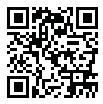
SAFE:
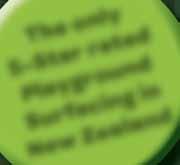
Cushionfall® playground mulch is specially treated so it’s free from nails and splinters. Many cheaper or imported products aren’t nail-free or splinter-free.
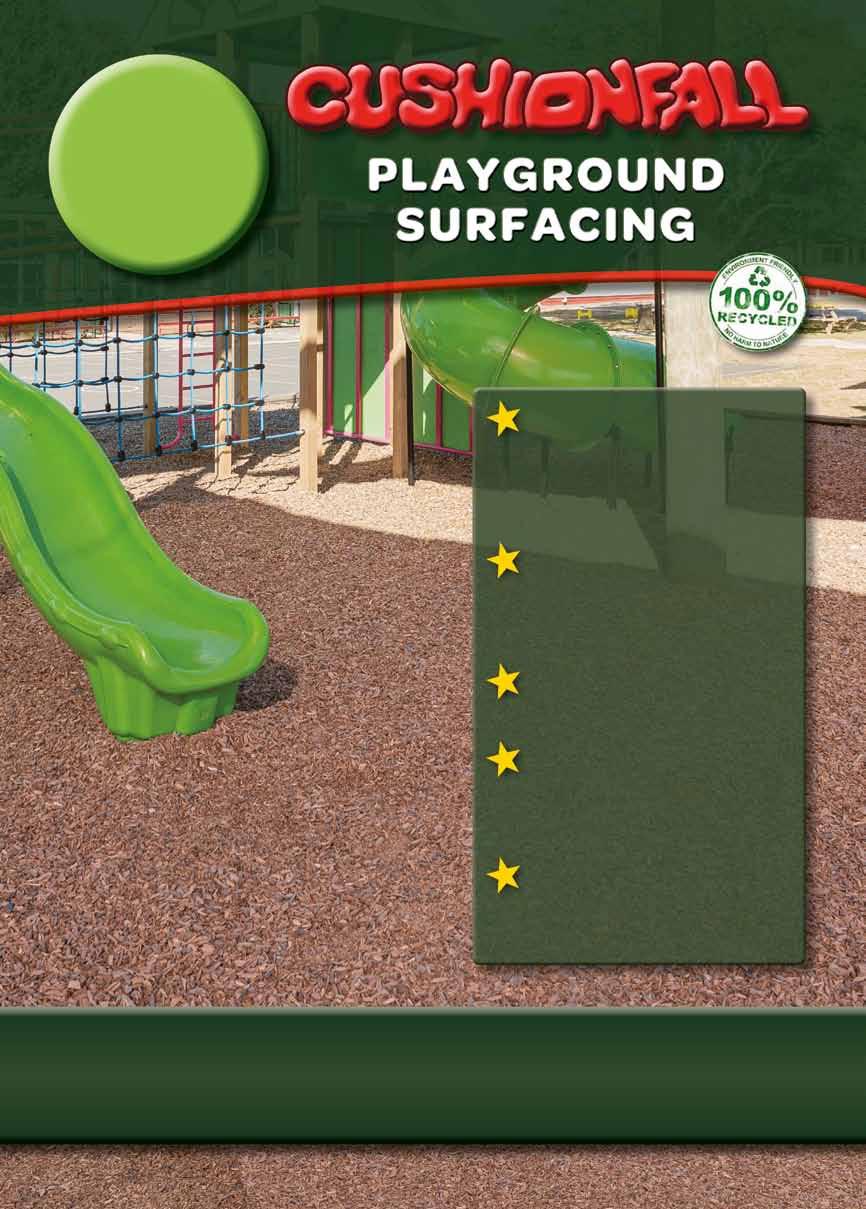
LONG-LASTING: tests have proven that Cushionfall® playground mulch actually becomes more effective over time. After 5 years it will be in better condition than ever!
QUICK-DRAINING: the children can start playing as soon as it stops raining.
WIND-PROOF:
Cushionfall® playground wood chips are shaped in such a way so that they’re not disturbed or blown around by the wind.
COLOURFUL: available in 8 non-toxic, UV-resistant colours, Cushionfall® playground mulch makes playtime fun!

I T IS OFTEN said in any organisation, business, club or association, that you need to have the right people in the right places. I would go further and say that you need to have the right people, with the right thinking, in the right places. It’s crucial.
In an education setting, within a school, a principal is a very good example of this. The role of the principal spans so many decision making domains. It is a fulcrum role. What we think and how we think, makes a big difference. Right thinking comes from right sight. We need to have good ‘eyes’ because how we see things, our sight, our perspective, our vantage point, informs our thinking.
As leaders there are four sights for wise leadership. We need to see further, faster, wider, and deeper. These four ‘sights’, operating individually and in synergetic coherent connection with each other, give us the insight and foresight for wise leadership of our schools.
❏ Further. An error of leadership, especially in those new to the role, is to be ensconced in the now, head down, blinkers on, wrapped up in the worries of the moment because that’s what’s there and because that’s what often demands our attention. Worries, troubles and issues will always be buzzing around like sandflies on a warm day. They don’t go away, but as principals we can’t only be in one time zone.
By being overly caught in the now, we leave ourselves open to constant surprises because we literally never saw them coming. We were figuratively blind. We were not looking for them. By being stuck in the moment, the future constantly sneaks up on us, capturing us unawares and bites us. Wise leadership is a time traveller seeing further in opposite directions.
1. A wise leader has an eye on tomorrow and reverse engineers that future, step by step into today, for a positive and beneficial outcome for those that they lead. What is happening tomorrow that will impact today?
2. Opposite to that, a wise leader can extrapolate out the course of today’s actions and decisions, and discern their future ripples. ‘This’ has happened and because of ‘this’ there is the likelihood of ‘this’, ‘this’ and ‘this’ happening in the future.
What is happening today that will impact tomorrow?
As a result of this further sight we become master planners, master shapers of tomorrow, master crafters of the time reality we are leading our staff into. We prepare and plough the paddocks of tomorrow in preparation for the next harvest.

If we don’t think further, then who will?
(Warning: When looking further it is not to overly obsess and worry about an infinity of possible ‘futures’. This robs today of its joy by borrowing tomorrow’s problems. We look further, for the benefit of others, not to feed steroids to our worries.)
❏ Faster. Leadership problems fall upwards. They defy the rules
of gravity. The bigger and heavier the problem the faster it falls upwards. It will be on our desks, in our faces, demanding our attention within moments, screaming for us to act. We must think fast. Is it a real crisis or a perceived crisis? Is it a creeping crisis or an emergency?
The problem may require us to make snappy, precise, and often very direct decisions to get through and manage a situation. There may be very little time for our usual decision-making processes of data gathering, consultation and reflection and review. The decision making process gets compressed down into minutes. We must make ‘calls’ and we must make them in haste. Action is required.
Fast leaders make these swift decisions based on the notion of cause and effect. We must process very swiftly what the cause of the crisis is and then what likely impact it will have, its effect. In doing that we then ask ourselves three more questions
1. What can I do to influence that outcome for good? Search for the opportunity in the crisis to bring about something good. It seems counterintuitive but you will be surprised that there is nearly always a silver lining to every storm.
2. What values within our school apply to this crisis? When we implement our values we create a positive values-based culture of crisis management. We do what is right, not what is popular.
3. Who do I need on my side? We don’t do it on our own, we get help. We are not islands. These are stressful times that require sharing the burden. The longevity and sustainability of the role of principal require it. This fast-thinking process is not always pretty, ordered and linear. It can be messy, chaotic, and constantly moving because we push into the chaos and bring about a sense of order and equilibrium. If we don’t think fast, then who will?
❏ Wider. As leaders we do not have the privilege of only being able to see the school from one singular perspective. Everyone else can, but we can’t. We have to ask ourselves ‘Whose perspective do I take to this issue or problem?’
To the cleaner, we must think like a cleaner. To the Office Manager, we must think like an Office Manager. To the teacher, we must think like a teacher. To the teacher aide, we must think like a teacher aide. To the School Board member, we must think like a School Board member. To the parent, we must think like a parent. To the accountant, we must think like an accountant. To the auditor we must think like an auditor.
Get it? We think wider.
Unfortunately, there is no vice versa in this. It does not flow back in the other way. People who are not leaders, can’t flip their perspective. They only see it their way, which in their mind, is the only way. It’s our role to see wider than anyone else in our schools. Perspective taking is not easy. There will be times it demands that we even walk in the shoes of one who would oppose and
resist us. Who, for want of a better word, could be called our enemy. This is where the leadership rubber hits the leadership road. It requires us to park our judgement and our natural reaction to retaliate, and try to see things from their perspective. Tough stuff. Really tough stuff, that many principals struggle deeply with, but it is not until we have dealt with this, that we can step into the mantle of leadership in the truest sense of the word. It is what makes a leader, a leader. Having a wider sight makes better decisions. A wide lens gives us understanding and insights that we would otherwise not have had. It helps us to see into the peripheral of a decision to determine if there is anything lurking there that can unstick what we are about to do. We walk the decision through the eyes of the different people. We become them. How do they see it? If we don’t think wider, then who will?
❏ Deeper. It is incumbent upon us to be the experts in our field. We are aware of the research. We know the debates. We have explored the subtleties of various issues. We have put the microscope on things to determine what trends, patterns and truths dwell in the depths. We then draw these out as principles to guide us.
We have a deep understanding of governance. We know how to lead people. We effectively manage resources. We are cognisant of the rhythms of change. We take that expertise and nuance it for the educational context we are in. We are not surface dwellers, bouncing across the top of an issue, like a skimming stone. Instead, we drop deep into the pond to see what mysteries lie underneath. We figure out why we do what we do, how it should be done, what actions are needed by whom, when, where and at what pace. We make the puzzle fit from a strategic level right down the nitty gritty of budgeting and timing. We take the pieces and
ensure that the right piece is in the right place at the right time.
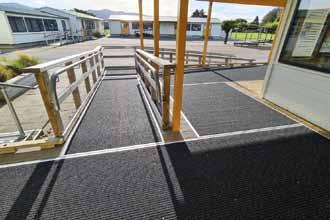


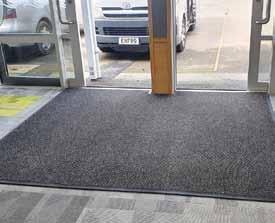



A further part of going deeper is reading what is not written and hearing what is not said. It is exploring what message that silence is sending. Wise leaders will delve into this, being careful not to get lost in it, but know that unspoken and unwritten words are also a form of communication they need to hear.
We go where no one else will actually go, as they firstly can’t, secondly, don’t want to, and thirdly don’t know how to. This is our domain, the domain of leadership, to go deep, to consider, reflect, ruminate and mine the issue for the gems that will grow us and the school we are leading.





If we don’t think deeper, then who will?

Bundle these four sights together and you get wise leadership. The four sights stop us from reacting out of our own emotional weaknesses, insecurities, frailties, and fragilities. Employing the four sights of leadership lifts us up from the temptation to lead out of short-sighted expedience. Expedience ‘solves a problem’ in any way possible, without insight or foresight. Expedience can give the appearance that the problem is solved but more times than not, we have created more problems with the ‘solution’.
Using the four sights of leadership does not mean that problems go away. We will always have trouble. Life guarantees that. There will be failures, mis-steps, and mis-takes. That is the human journey. The four sights of leadership empower us to navigate the troubled waters of leadership with the skill of a master sailor.
Our reputation as principals and leaders is grounded in our understanding and application of the four sights into the daily cut and thrust of school life. Seeing further, faster, wider, and deeper enables us to rise to another level and take on the true mantle of leadership for our schools.

Have a blast and gain con dence teaching STEM by signing up for the Wonder Project Rocket Challenge in 2023.

‘A fun way to learn’ is the most commonly cited reason why teachers sign up to participate in the Wonder Project Rocket Challenge – a sentiment frequently echoed by their students, and the industry professionals who support the challenge in classrooms across Aotearoa.
e free schools programme seamlessly blends the thrill of fun, hands-on activities, like launching rockets, with STEM learning aligned to e New Zealand Curriculum. And by connecting classes with volunteer STEM industry professionals, as well as supplying teaching resources, student resources, and a challenge kit free, participating schools are empowered to teach STEM with con dence.
“From a teacher who was always a bit scared to teach STEM with great con dence, I now absolutely love it thanks to the guidance in the Rocket Challenge!” says a teacher from Bankwood School.
Feedback on last year’s challenge highlighted that the opportunity to deliver a fun and dynamic hands-on learning challenge has not only kept students engaged with STEM, but also made the experience teaching STEM more enjoyable.
• 90% of teachers and 86% of students said they would do it again

• 85% of students were fairly or completely engaged in the learning
• 54% of students were more interested in STEM jobs after the challenge.

Curriculum links: All learning material is developed alongside teachers, industry professionals and students, and aligned to Level 3 of e New Zealand Curriculum, to take some of the pressure o planning for the school year.
Rocket Challenge achievement objectives include:
Science: Physical world: Physical inquiry and physics concepts. Identify and describe how movement and forces e ect the motion of rockets.
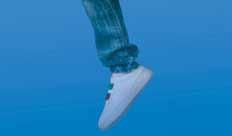

Technology: Technological knowledge: Technological modelling. Undertake functional modelling of rocket prototypes to inform decision making. Evaluate rocket prototype tness of purpose to re ne further developments.
Mathematics and statistics: Geometry and measurement: Measurement and shape. Represent rockets through drawings and models. Use metric units to nd length, volume, weight (mass) of the rockets and the angle of rocket launch.
Sign up now for 2023
e Wonder Project Rocket Challenge is live for registrations. Sign up to be part of the wonder today at wonderproject.nz or contact wonder@engineeringnz.org for a kōrero with our advisors.
Lundia’s NEW Learning range has been several years in design development. The range is modular and flexible allowing multiple classroom solutions that assist teachers to facilitate all types of learning from Makers Spaces and Mobile TV, Whiteboard and Acoustic Walls to Softscapes and stackable or staged seating.

Our fixed and loose furniture also complements our Natural FSC certified Pine Mobile and Classic Shelving. Inspired by Biophilic Design principles with a new pallet of colours taken from nature we are sure this will bring a fresh approach to furnishing the learning environments throughout Aotearoa.





lundia.co.nz
info@lundia.co.nz


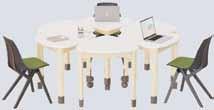
0800 860 460

 Liz hawes Editor
Liz hawes Editor
It is no secret that aotearoa New Zealand has a long history of racism and inequity. Like so many colonised countries, the real intention of colonisation was not so much to protect the rights of indigenous peoples, their language, culture and lands, but to assume power and sovereignty over them.
DESPITE ThE 1840 signing of Te Tiriti o Waitangi, which Māori believed gave them all the rights of Pākehā, without ceding sovereignty, the settlers didn’t interpret the agreement in the same way. They believed that the Treaty gave them full sovereignty and proceeded to colonise the country accordingly.
One way to ensure intergenerational power and sovereignty over indigenous peoples is through education.
It is indisputable that this was the case for Aotearoa New Zealand. The Native Schools Act 1867 established the first Native schools for Māori. The priority was to teach English with the intention of assimilating Māori into the Pākehā system. It wasn’t long before it was forbidden for Māori children to speak their first language at school. Alongside teaching only in English, came an expectation that the future role
of Māori would be to work in servile labour rather than pursue academic aspirations.
With Māori children exposed to low educational expectations and having their identity, culture and language stripped from them, it is not surprising that over a hundred and eighty years later, Māori still sit at the bottom end of every educational, health, mental health and social statistic. As the years ticked by, teachers and principals became more aware that racism and denying tamariki their human rights to culture and language was contributing to the low educational expectations of schools and thus the lower achievement of tamariki Māori.
In 2011, Keri Milne-Ihimaera and Peter Witana, both principals of Far North schools, and members of the NZPF national executive, began a journey to develop a PLD option for



principals which by 2012 would become the ‘Māori Achievement Collaborations’(MACs). A short time later Whetu Cormick was elected to the executive and joined Keri and Peter to push the MAC out the gate. The MAC was all about lifting the achievement of Māori tamariki through principals exploring their own identity, language and culture and through that process coming to appreciate that a Māori world view was just as valid and valuable as their own. With this knowledge and understanding, they would transform the culture of their own schools to allow tamariki Māori to feel included and know that their culture was valued alongside others.

Hoana Pearson, the first Te Pitau Mātauranga (programme coordinator), said at the outset, this is about changing hearts and minds. ‘Our actions are determined by our thinking which is determined by our perceptions, our beliefs, our assumptions, and our values. Even if they are based on myths and mistruths.’
She went on to quote Sergiovanni (1992) saying that, ‘Transformation requires new knowledge – to change our thinking and therefore our perceptions, beliefs, assumptions and values – from the head to the heart, to the hand.’

This is what we call transformational work. It is about conscientisation, or consciousness raising, a concept adopted from the work of Paulo Freire, a Brazilian educational theorist, – bringing racism and discrimination into consciousness and critically recognizing it for what it is. This is a confronting experience and requires skilled facilitation and the support of a caring, collaborative group. That is the work of the MACs.

By 2012, the first MACs were up and running. The Ministry of Education had agreed to fund the first tranche, providing the release time for principals to train as facilitators, to guide the principals in the MACs, who in turn had volunteered to undertake this journey of consciousness raising. The governance of the MACs represented a partnership between NZPF, Te Akatea (Māori Principals’ Association) and the Ministry of Education. As is often the case with a new venture, those early facilitators, led by Hoana Pearson, worked tirelessly to establish the kaupapa, whilst continuing to lead their own schools.

An accomplished scholar herself, Hoana was determined to secure a sustainable funding stream for the MACs and knew that to do so would require verifiable evidence of the success of the programme.
A group of education researchers from Auckland University came to her aid. Led by Dr Melinda Webber, they undertook an independent study of the schools from the first three MACs established. The results were glowing. The research study was able to link the changes in attitude of the principals through to changes in the culture of their schools which resulted in a substantial lift in the academic achievements of tamariki Māori.
More and more principals were observing how successful the MAC PLD was and they too wanted to join the ‘coalition of the willing’. Their numbers far exceeded the number of trained facilitators. The existing facilitators, not wanting to turn away eager principals, stretched themselves close to breaking point and Hoana, who was by now full time employed by the MAC
Board, took leadership of several MACs herself.
It was time for facilitators to be full time employed by the MAC, to do the important work only they could do, and it was time to relieve Hoana of all the administration work to be free to train new facilitators.
The Ministry recognized the power of the MAC to be transformational and established a funding stream so it could expand, and facilitators could be employed to work full time. With no advertising, principals flocked to the MAC which grew from serving 49 schools in 2013 to 428 in 2022. Principals continue to queue today.
October 31–2 November 2022 marked the first conference the Māori Achievement Collaboratives (MACs) had staged. There had always been an enthusiastically attended annual wānanga, usually hosted on a marae, but the numbers registered to attend in 2022 outstripped capacity for a marae-based event.


Hoana Pearson summed it up in her address to the conference saying, ‘The role of the education system and the educators within it is to maximise the cultural capital of the Māori learner as foundational to enhancing their mana, success and achievement culturally as well as academically.’

She quoted McKenzie & Singleton, 2009, p.5 saying, ‘The culture of the child cannot enter the classroom if it has not entered the consciousness of the teacher.’ Expanding on the quote she said, ‘It certainly won’t enter the school gate if it is not in the consciousness of the school principal . . . So, it requires deliberate and planned action . . . not just left to chance.’
Launch of Te whare Tapu O Te Ngākau Māori – Ki te whai ao, ki te ao Mārama
For true biculturalism to thrive in our schools, which is the aim of the MAC, the culture of schools needs to change. Culture change requires a new way of thinking and a new framework within which biculturalism can succeed.
It is from this thinking that Te Whare Tapu O Te Ngākau Māori was built. Authored, or architecturally designed by a group experienced in the MAC, including Hoana Pearson QSM (Ngāi Tūāhūriri, Ngāti Raukawa ki te Tonga, Ngāti Rangiwewehi), Leanne Otene, NZPF President for 2023 (Te Rarawa, Ngāti Wairupe rāua ko Ngāti Kuri), Damon Ritai (Te Ātiawa, Ngāti Mutunga, Taranaki, Ngāti Ruanui, Ngāruahine, Te Ātiawa ki Te Tauihu, Ngāti Rārua, Ngāti Koata), Te Ringakaha Tia-Ward (Ngāti Toki, Ngā Puhi) and Hayley Read (Ngāti Pākehā), the book is a framework to support the growth of a new education system to support all learners (akonga).
It adopts the structures of marae which mirror the way knowledge of Te Ao Māori, Te Reo Māori me ona tikanga, develops over time. The book is not only a narrative of this process towards biculturalism, it comes with a kitset marae. This allows akonga to engage in the physical process of building a model marae to better understand all the different concepts and how they fit together. Akonga can immediately see the interdependencies of the different pieces of the structure if the marae is to hold up. Any missing or misplaced pieces and the marae will not stand. Each essential piece of the model is labelled and described in the book. It is an ingenious approach and immediately appealing. To use the book to advantage requires PLD for principals and staff, and this is offered by the MAC facilitators.
Te Whare Tapu O Te Ngākau Māori was launched at the MAC conference. Delegates enjoyed a firsthand demonstration of the marae model building project, while Hoana Pearson provided a commentary. She described how the framework has been built and how Te Ao Māori can be developed in schools as an equal and valued world view in which all akonga can immerse themselves and be successful learners.

 Liz hawes Editor
Liz hawes Editor
I N r E c ENT DE ca DES , housing has become a symbol of inequity in Aotearoa New Zealand. It clearly signifies the haves and the have nots. So entrenched are the inequities that stories of families living in garages, caravans, tents, cars and vans no longer make headlines.
Governments of all shades have weathered blame for housing issues. Some for selling off state houses, others for not building enough. Market rents were introduced by one Government then accommodation supplements by another. Couple this with a decade of high immigration (from 2008) with no action to address infrastructure or build more houses and the result is an overheated housing market, insufficient housing stock and
Te Haumoana Biddle and his staff know well the desperation of many of their children’s circumstances. Although not all children live in emergency housing, a significant number do. The transient nature of the school roll makes for difficult planning.
I visit the school just days before the term finishes for the year and am ushered into a room where the floor is stacked high with bulging ‘Pak n Save’ carry bags.
‘The wellbeing of our children and their families is our number one priority,’ says Te Haumoana emphatically, ‘and we can’t do it alone.’
The school has generous partners, including the nearby Pak n Save supermarket who provided the bags filled with staple
higher rents for all. As the gap between the advantaged and disadvantaged grows, so do the housing woes.
We don’t just have a growth in the numbers of those without a proper roof over their head, we now have a crisis. The rhetoric has shifted from ‘social housing’ needs to ‘emergency housing’. The latest solution is for homeless families to be deposited in blocks of motels, subsidized by the Government.
Rotorua’s Fenton Street, once the golden mile of motel accommodation for visitors to the tourist city, is now the notso-golden mile of ‘emergency housing’, with all the negative headlines that attracts. Ulster Street in the city of Hamilton is a replica of the Rotorua model and there are many more scattered across the motu.
Life for those in emergency housing is desperate. No one chooses to raise their family in a motel and share their distressing lives with equally despairing neighbours. These victims of society’s inequities have either tried everything to lift themselves out of destitution and failed, or acquiesced to helplessness. Gang influences, mental health issues, trauma, and anxieties flourish like a virus in these communities, sometimes resulting in crime, drug addictions and violence.
Whitiora Primary School sits in the middle of the new motel emergency housing area of Kirikiriroa. The Principal,
foods, and a few extra goodies, to help the families get through Christmas and the summer school break. Any spare room is topped up with various articles of clothing and footwear provided by KidsCan.
‘There is one bag for every family in our school,’ says Te Haumoana. ‘We know holidays can be tough for our families because when school is closed, the children don’t have their usual school breakfast and lunch,’ he said.
He and his staff are grateful for the Government’s policy to provide lunch for low decile schools like his own. ‘We would be feeding our kids anyway,’ he said, ‘but having these meals provided means we have the food money to spend on other supports.’
The school can’t address all the social ills, but they do everything possible to provide physical and emotional nourishment and a sense of security, safety and consistency whilst the children are at school.
‘Our children all know that every staff member here cares about them and will keep them safe,’ says Te Haumoana.
The Whitiora School curriculum follows Te Whare Tapa Whā, a holistic model of health and wellbeing. It was originally developed for the healthcare sector and was the brainchild of Māori health expert, Professor Mason Durie. It comprises four
dimensions that influence teaching in a positive way.
The four dimensions are:
Taha wairua – the spiritual domain or wellbeing of the learner
Taha tinana – the physical domain or well-being of the learner
Taha whānau – the family or social well-being of the learner

Taha hinengaro – the mental domain or well-being of the learner
Thinking about these four dimensions as the four sides of a wharenui, it becomes clear that if any one side is weak, the whare is in danger of falling over. For learning to occur all four dimensions must be strong. This shifts the Kaiako (teacher’s) thinking to include factors beyond the content to be taught. The learner (ākonga) is at the centre, so all four dimensions are equally considered. It is a framework for teaching and learning. It guides the school in shaping their learning programmes and hauora (well-being) plan. It ensures, for example, that all ākonga have eaten before learning starts for the day, and that they all have lunch to sustain them through the afternoon’s learning.
Whitiora School has a higher than usual number of young people suffering trauma, anxiety and stress, due to their living conditions and the uncertainties in their everyday lives. Principal, Te Haumoana Biddle, is acutely aware of the high needs of some of his ākonga and invests accordingly.

‘We are fortunate to have a very effective support team, Te Puumanawa, at our school, comprising a full-time guidance counsellor, a full-time learning support coordinator (LSC), a full-time social worker, who also works with our families, and a member of our Senior Leadership Team (SLT), leads this support team full-time,’ he said. ‘We also have an excellent team of learning assistants and teacher aides.’
Outside of the Puumanawa team are further support agencies
such as the Breakfast Club (a church group), the District Health Board and the Pacific Island Centre for Health, to name a few. I met Assistant Principal, Kate, who leads Te Puumanawa. ‘Priority is to first make school a safe and nurturing place to be,’ said Kate. ‘I am a trauma-informed teacher, trained by a psychologist and my job is to respond to behavioural issues in the school and work with our school counsellor to deliver my skills back to the staff,’ she said.
‘We have well-being plans for our ākonga which identify their strengths and indicate where intervention might be needed,’ she said.
Akonga learn how to recognize when they need help. They learn about the ‘red’ and ‘green’ brains. The red brain relates to feelings of anger or violence while the green brain is the calm brain. Students learn strategies to deal with their red brain feelings, such as withdrawal to a green space to make them feel calm again. Once calm, they can talk through what triggered the anger.
‘Students are encouraged to take responsibility for their actions and to give back,’ said Kate. To illustrate her point she told me the story of a group of young girls caught vaping at school. First, they were educated about the risks of vaping then they created a presentation to
show the Puumanawa team, their own class and their whānau, triggering discussions and positive commentary.
‘Relationships are everything,’ said Kate, ‘and the connections ākonga have with their teachers and other students, keeps them coming to school,’ she said.
This excellent work gives life to the school’s ‘heart’ which aspires to produce young people who are honest, engaged, have good attitudes, are risk takers and are thoughtful. These are the values of the school and are clearly communicated at every opportunity.
Hands-on experiences are highly rated at Whitiora School. Ākonga have opportunities to work with clay, which is very soothing, and to create objects which are wood fired and become




treasured pottery pieces. They also love to bake and cook and work in the gardens with the help of learning assistants.
‘These are excellent opportunities for ākonga to engage in conversations, to share with each other, communicate, expand their vocabulary and have new experiences,’ said Kate.
Other experiences have included taking whole classes to a restaurant for a meal. ‘Through going to the restaurant for a meal together, ākonga learned many life skills – how to queue in an orderly way, what a smorgasbord is and how it works, how to behave in a restaurant, how to use all the utensils and how to interact with the wait staff,’ she said.
These hands-on experiences are the entry point for formal writing. Ākonga are far more motivated to write about something
Nic Bean 021 278 0098 / nic@sportclub.co.nz Sportcourtcentre.co.nz
Your only New Zealand supplier of the innovative NexxtGrip sport






Sport

that creates identity, addresses sustainability head-on, improves performance, and has a 10 year warranty. A floor for everybody in the community.
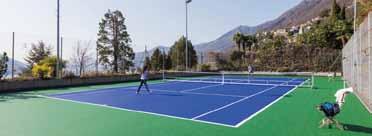
they have done, made or visited.
Role modelling is another important aspect of learning. Not only are the teachers role models but special visitors are invited to the school to provide aspirational models for ākonga. The Governor General, for example opened Whitiora’s new learning space and sportspeople and other high-profile figures are invited to speak with ākonga. These are uplifting experiences giving a sense that life can offer many options.
I had the privilege of sharing lunch with ākonga and talking to them. What I found were groups of engaging, polite, inclusive young people unafraid to meet a stranger like me and curious enough to politely ask how my camera worked. Some of the photos that appear in this article were taken by some of those curious quick learners.
Whitiora has its challenges. The school educates big numbers of young people from some of our most disconnected and disenfranchised families in the country. Yet most of these tamariki are largely indistinguishable from any other group of young people in Aotearoa New Zealand.


There is no doubt that Te Whare Tapa Whā approach to learning has a big part to play, but more than that it is the extraordinary devotion and commitment of the staff to the ākonga and whānau of the school that makes the real difference. If you are a teacher who wants to make a difference, then go visit Whitiora school!
Whitiora is a remarkable success story.
For sports, Assembly, Jump Jam and performances.
Best sounding portable PA in New Zealand. Fully featured, top quality and easy to use. Includes a weather cover for outdoor use.
Built-in trolley and powerful rechargeable batteries so you can take it anywhere.
$2749+gst for the wireless PA system
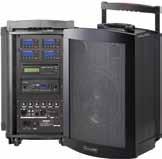
$2749 + gst
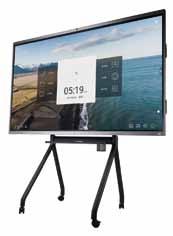
• From 65”–98”
• 4K Ultra-High definition
• Electronic Whiteboard
• Touch control
• Wireless presentations
• Wall mount or on mobile trolley
• Available with camera/ speakers for zoom/ teams, or without
If it is time to revamp the hall AV system please drop us a line.
Large automated electric screens, Projectors with HDMI wall connection, Lighting, Sound systems and wireless microphones . . .
sales@edwardsnz.co.nz
edwardsnz.co.nz
• Park Supplies & Playgrounds design and manufacture playgrounds right here in New Zealand and have been doing so for more than 30 years.
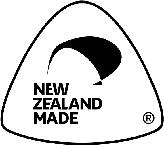





• We customise to your specific needs rather than importing componentry from overseas and you have the reassurance that our equipment is robust and made for New Zealand conditions.



Our
• Park Supplies & Playgrounds provide imaginative and fun playground solutions to aid in development, fitness and learning.
• We value input from your staff and students and will involve you in the design process to ensure your playground needs and dreams are realised.
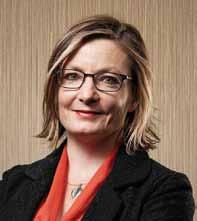
SOMETIMES SchOOLS NEED to onboard a new staff member quickly to fill an unexpected gap, or to provide extra resources at short notice with the enrolment of a new student who has additional needs. It is important to remember that schools are captured by the Children’s Act 2014 (the Act) which requires them to safety check all children’s workers before they are employed or engaged. These checks then have to be updated every three years. There have been legislative changes in this area over the COVID-19 period, and if you have not reviewed your policies and processes recently then now would be a good time to do so.
A children’s worker is a person who is paid to work in, or provide, a regulated service, and the work may, or does involve regular or overnight contact with a child or children, without their parent or guardian being present. It does not include volunteers, unless they are working as part of an educational or vocational training course (for example a student teacher as part of an education qualification).
Most people engaged by a school, including Teacher Aides, will be considered a ‘children’s worker’ under the Act. For those who are not considered to be children’s workers, schools should refer to Schedule 4 of the Education and Training Act 2020 (ETA), which requires police vetting of non-teaching, unregistered employees and contractors. Essentially, anyone engaged by the school who is not required to be safety checked under the Act will be required to be police vetted under the ETA.
Before employing or engaging someone as a children’s worker, a school must complete a safety check that complies with the Act.
For a new children’s worker, the school must:
■ verify their identity;
■ obtain a Police Vet;
■ gather information about their work history for the previous 5 years;
■ obtain the name of any professional organisation or authority they are a member of or hold a current license, registration or practising certificate for;
■ contact at least one referee;
■ interview them; and
■ conduct a risk assessment to determine whether the person does or would pose a risk to the safety of children, and to what extent.
The checks must be periodically carried out again within three years after the date of the latest safety check. However, these periodic checks do not require the school to collect work history, contact a referee or interview the person.
The school is not required to request a police vet for a teacher who has a current practicing certificate or limited authority to teach from the Teaching Council. The Teaching Council carries out this check as part of approving a practicing certificate or authorisation.
Children’s workers are further classified as either ‘core workers’ or ‘non-core workers’. Core workers are those who are either the only children’s worker present with, or someone who has primary responsibility for, or authority over, a child/children. Schools are prohibited from employing or engaging, or continuing to employ or engage someone as a core worker if they have been convicted of a specified offence (unless they hold an exemption). The Act lists the specified offences, most of which involve child victims, or are of a sexual or violent nature. The Criminal Records (Clean Slate) Act 2004 does not apply to safety checks of core workers. The Act sets out a specific process for suspending and terminating a worker where the school believes they have been convicted of a specified offence.
The Act does set out two defences to the obligations; the defence of taking all reasonable steps, or relating to short-term emergencies. Without one of these applying however, failing to comply with the obligations may result in a fine not exceeding $10,000.
We strongly suggest schools have in place an onboarding procedure or checklist to ensure the safety check components are all ticked off before employing or engaging a new children’s worker, and that it is clear who has the delegated authority to carry out the necessary checks. It is also useful to set reminders for when the periodic safety checks are required to be carried out again.
These statutory requirements can be difficult to manage amongst all of your other duties and responsibilities. But not following due process can expose the school to significant risk, and having sound, clear and legally compliant policies and procedures to follow will be crucial when the pressure is on. We suggest you use the resources available, including following Ministry of Education guidelines and taking advice from NZSTA.


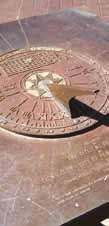





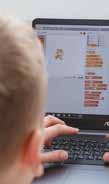






FOrMEr MINISTEr OF Education Hekia Parata is reputed to have once said in a meeting, ‘If anyone tries to tell me one more time about Finland’s education system I’m going to scream!’ The story may be apocryphal, but it speaks to the frustration of many politicians, policymakers, principals and teachers around the globe when it comes to an education system that has often seemed too good to be true.
It would be fair to say that prior to the first round of the OECD’s PISA international testing programme in 2001, the Finns didn’t see their school system as being so remarkable. Hannu Simola wrote in his 2015 book, The Finnish Education Mystery, that before the PISA results came out most Finns including most educators thought that the Finnish comprehensive school system was good but far from excellent. Indeed, some within Finland saw it as a catastrophe.
When Finland topped the international PISA league table in 2001 the critics were silenced and the rest, as they say, is history. The Finnish education system became regarded by many as the best on the globe, leading to international fascination. There was even ‘PISA tourism’ as international delegations flew into Helsinki for brief visits intended to find out the secret of Finland’s success.
As time went on, Finland inevitably lost its top ranking in the PISA tests but for educators in many countries it has continued to act as an exotic ‘other’: a reference society that allows for the imagining of a different kind of education system. This has been especially important for those countries with highstakes accountability, market competition between schools and privatisation. This is because the Finnish school system has seemed to be thriving with few of these features.
Pasi Salberg’s books on Finnish Lessons are the best-known texts extolling the virtues of Finland’s education system, but I’ve always had mixed feelings about his work. On the one hand, Salberg has effectively used the case of Finland to push back against neo-liberal visions of education: the ‘Global Education Reform Movement’ (GERM) was the term he coined. He has been a much-appreciated keynote speaker for the NZPF and NZEI along with many other educational organisations around the globe.
On the other hand, Salberg has been a policy entrepreneur, working the international circuit delivering multiple expensive presentations each year. You can find him on his own website at pasisalberg.com and his services are booked through American Program Bureau, Inc., a ‘Global Speaker, Celebrity & Entertainment Agency’. It would be fascinating to know what
he has been charging over the years and the income generated (less expenses of course). The American Program Bureau, Inc. website allows for a range of US ‘$7500 & Under’ to ‘$100,000+’.
The fact is that Finland’s reputation as an educational utopia has created multiple business opportunities for Finns at every level: as individuals, for companies selling Finnish educational products and services, and for the Finnish Government, which has become involved in sponsoring educational export. Sadly, much of this activity has ignored important differences in cultural and political contexts which mean that Finnish approaches often won’t transfer well into other national settings.
Luckily the majority of Finnish educators have not become caught up within the marketing of their education system. They continue to work with the day-to-day and longer term challenges that Finnish schools actually face, which the PISA hype has usually ignored and even distracted from. When I first visited Finland in 2016, it was such a pleasure to meet many academics and practitioners with a refreshingly more critical view of Finnish education than what I had come to expect from my previous reading.
This brings me to my new book, co-edited with three Finnish professors, Piia Seppänen, Jaakko Kauko and Sonja Kosunen. The book, published by Springer in February, is called Finland’s Famous Education System: Unvarnished Insights into Finnish Schooling. As this title suggests, it questions the mythology and commonly held assumptions surrounding Finnish schooling and seeks to provide an astute analysis of the strengths and challenges of the Finnish education system.
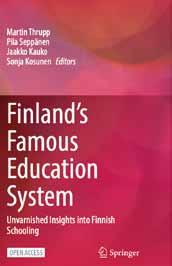
This book brings together the work of more than 50 Finnish authors (and an honoured Kiwi!) across 28 chapters covering a wide range of topics. It seeks to offer a balanced and realistic account of continuing concerns within Finland’s school system while recognising its huge strengths as well. I consider it the most important publication I have been involved in across more than three decades of writing about education.
I’m not going to tell you more about the book, because here’s the thing: due to the generosity of the Finnish editors involved and their Finnish universities it is Open Access. This means that anyone around the world with internet access can download the book from the Springer website absolutely free of charge. This includes you, and I hope you will at least dip into it and read some chapters of particular interest. Finland has a similar population size to Aotearoa and how and why our own education system is similar or different is well worth thinking about.
















WhILST My TE Reo me o ngā tikanga Māori journey began with the birth of my son Manu in 2010, my 1 year sabbatical at Te Wānanga o Raukawa in 2020 marked a shift in perspective on what a Māori world view might be like. My journey since then is leading me to understand that, just as there is no common view of the world within my British culture, there are many rich perspectives, viewpoints and kaupapa to appreciate within Te Ao Māori.
Since moving to Te Tai Tokerau I have challenged myself to say yes to every opportunity that has been offered to extend my understanding and experiences. I have been kaikaranga for my kura, I have stood to speak as whaikōrero at a colleague’s pōwhiri and this week as tangata whenua at my own kura. In the lead up to most of these important occasions, I have experienced significant self doubt and had to work hard to ensure I live up to the trust placed in me by the rangitahi Māori within my kura.

Last year, I was offered the opportunity to attend a wānanga|seminar about Māori waka by a friend who has been a Pākehā kaihoe|rower for many years. Since I didn’t learn to swim until my mid 20’s I can honestly say it was the marae stay and the new learning that was the drawcard. She kept inviting me and so I accompanied her to waka drill training in Moerewa. I struggled alongside tamariki and rangitahi who learn fast and can combine learning of words and movement for several hours at a time. Watching intermediate and high school age rangitahi learning complex haka and mōteatea, steering waka, learning history from their kaumātua and working through early

morning and late night waka drills, makes me certain that the reason Māori students underachieve in NZ education is more about school systems and teaching than their ability to learn.
When it came to the final marae stay in the lead up to participating in the waka flotilla at Waitangi, I suggested it would be better if I helped in the kitchen. My friend smiled and said I should wait until I had been out on the water. Given the ability of the ringawera|cooks to feed 200 hungry people over 4 days and nights at Waitangi I would have been even more out of my depth in the kitchen!
Over Waitangi, I stood as part of the crew to welcome visiting politicians to Waitangi Marae and was kaihoe on the waka Kahakura. The kotahitanga|unity as we rowed together up to Haruru Falls and the exhiliration of passing under the Waitangi bridge and gathering with 8 other waka for karakia on the beach on the morning of Waitangi Day will stay with me forever.
Stepping out of my comfort zone takes many different forms and it often means tackling some uncomfortable truths. I took my 12yr old son to Waitangi, since he lives in Tamaki Makaurau he had been unable to attend trainings and he knew it was unlikely he would get a spot on the waka. It was amazing to watch him pick up skills in a couple of hours that I am still struggling to master after many training sessions. He stood as part of the waka crew for the pōwhiri at Waitangi Marae and paddled as a kaihoe as part of the flotilla. While we were there he was obviously uncomfortable about engaging with me too
In a Fun & InteractIve envIronment
• FASE “First Aid for the School Environment” – 4Hr Basic First Aid Course for general teaching staff
• 1 Day Workplace First Aid – 8hrs for designated First Aiders and office staff
• 2 Day Workplace First Aid – for Gateway/Star students. Units – 6400, 6401, 6402
• 2 Day Outdoor First Aid – for staff leading EOTC activities & Outdoor ed. students. Units – 6400 series & 424
nZQa cateGorY one ProvIDer


For all aid course information please call email us on admin@first-training.co.nz or call us on 0800 1ST AID or 09 838 2110 www.first-training.co.nz
much – when I asked why this was, he told me some of the boys had teased him for having a Pākehā Mum. As a result, we talked about the effects of colonisation and how to walk tall in Te Ao Pākehā and Te Ao Māori.
In Term 2 of 2023 I will take on the principalship of Ruakākā School, a kura of 350 students south of Whangārei. Having established their first bilingual class in 2013, Te Whānau Harakeke now has 4 classes. In 2023, all 4 classes will become Rumaki Reo|full immersion Te Reo Māori classes. At interview I committed to speaking only Te Reo Māori within those classes. In preparation I have signed up to Te Ahu o Te Reo, a national programme designed for teachers. An evaluation report based on the first pilot delivery concluded,
‘Te Ahu o te Reo Māori is more than a te reo Māori programme. It is an opportunity for teachers to engage and understand a different worldview; to engage in cultural practices, narratives and histories relevant to Aotearoa and to the system that supports the education of all students. The programme has enabled teachers with different skills and knowledge, from different schools, and from different sectors, to come together in a safe place to learn. The programme has challenged, overwhelmed, invigorated and inspired.’
Whilst I have not (yet!) had the opportunity to be part of Te Ara Hou, Māori Achievement Collaboratives (MACs), Hoana Pearson’s words challenging principals to ‘step out of their comfort zones every day’ really resonate with me. We expect our akonga to do this constantly in our classrooms – why wouldn’t we do the same for them?
We are changing the course of on-site Oral Healthcare Delivery. By developing robust, long-term partnerships with secondary schools, our commitments go beyond the confines of the dental surgery.
Aside from the oral care benefits that both teaching and non-teaching staff get, we would be happy to create a well-being package catered to your school's needs which may include oral health education sessions, careers experience, sports and academic awards and scholarship programs for students.

Improving Pedagogy can be challenging and until now has been an arduous and time consuming process as schools don’t have systems that capture the schools’ expertise in this area or have easy access to Quick Find Solutions and Research across Pedagogical fields.
SLEUTH™ aims to change this by surveying and matching pedagogical capabilities within schools (utilising your staff’s abilities) plus providing a platform to work on Pedagogical Focus Areas – Access Quick Find Solutions and Access Research across 12 Pedagogical Fields


Pedagogical Fields available include the following:
If you would like to know more about SLEUTH™ please contact either Tony / Andrew or any of the team as they will be more than happy to provide further details.
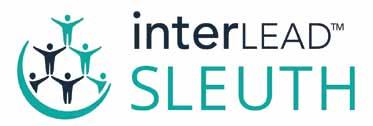
Tony Burkin 021 729 008 t.burkin@interlead.co.nz


Andrew Ormsby +64 3 420 2800 ext1 a.ormsby@interlead.co.nz

Changing not what you teach but how you teach it can be the key to engaging students and growing their potential.
